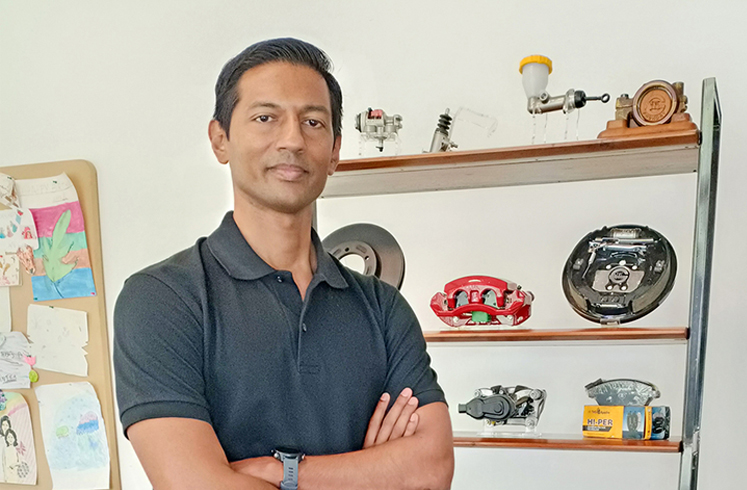
Despite the hurdles imposed by the pandemic and the sluggish growth in the automotive industry, Sriram Viji, Managing Director, Brakes India Private Limited, is quite gung-ho about how the future will shape up, as revealed in this interview with N. Balasubramanian where he talks about the recent restructuring, key takeaways from the pandemic, product development initiatives, industry trends, market growth drivers and future plans of the company
With a six-decade-old rich history behind it, Brakes India Private Limited has been setting new benchmarks in the Indian automotive industry with its world-class braking products and related system solutions. One of the largest component manufacturing companies in the country, Brakes India has, through its strong research and development and technology focus, always stayed ahead of the curve, delivering customer-centric solutions, and evolving with changing mobility trends.
Providing an update on the company’s performance in FY 2021-22, Sriram Viji, Managing Director, Brakes India, says, “When FY 2021-22 started, post the second wave, the first one and a half months were a total washout. However, the turnaround has been exciting. Consumer sentiments and volumes have gone up. There were some headwinds like chip shortage, commodity price increases, supply chain constraints, etc. That said, we have seen a big uptick on the domestic side across all the segments we are engaged in, namely, passenger vehicles, light and heavy commercial vehicles and tractors. Our export market has also shown quite a bit of stability”, he adds.
As for the current year, there has been quite a bit of growth relative to last year. “While volumes have not reached the peak 2018-19 levels, there are still positive signs. Passenger car sales are picking up. With CVs we are seeing fleets starting to fill up again after two years. While we have closed FY 2021-22 just short of Rs 5,000 crore, we are seeing a top-line growth of close to 20%. We see volume growth happening across all the segments where we are present”, he elaborates.
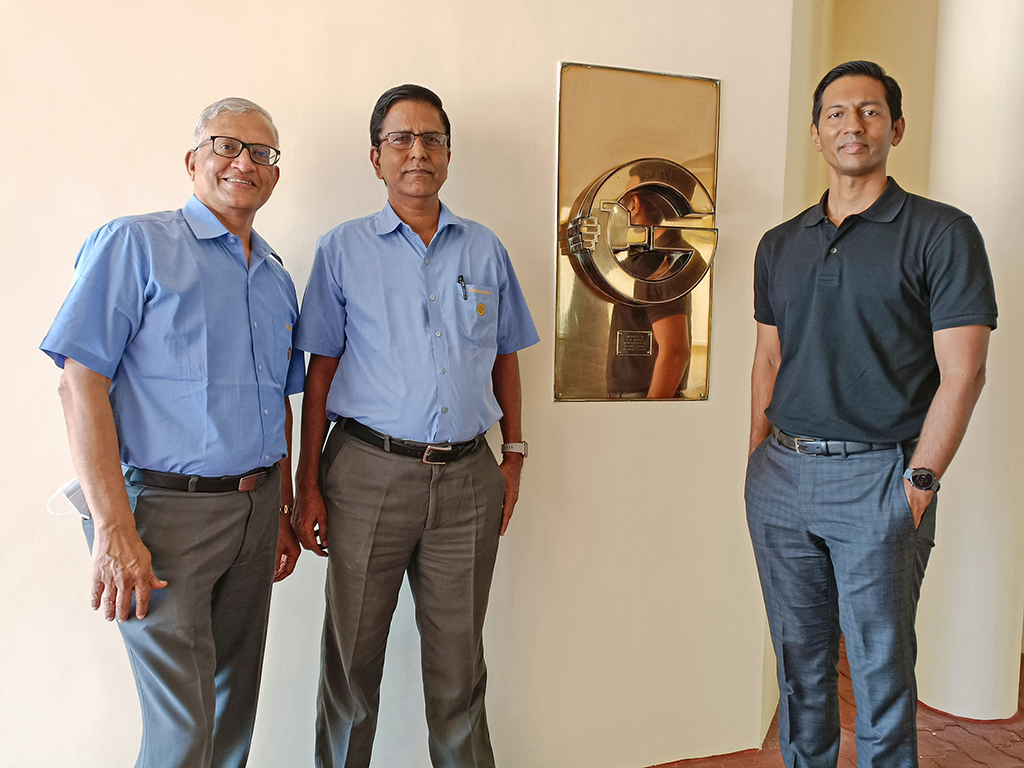
From a product perspective, a lot of companies have been using the lean time brought on by the pandemic to focus on launching new, innovative products. Revealing Brakes India’s new developments, Sriram says, “We have gone through quite a few structural changes in the last year and a half. Post the restructuring in the TVS Group, the alignment of ownership and management has given us a more positive outlook for the future. This has allowed us the freedom and agility to do what we need. It was probably the biggest change that we have had since our inception in 1962. Brakes India has been a joint venture formed with a UK company called Lucas Industries, which changed hands to TRW and most recently to ZF. Due to other acquisitions that were made globally, ZF was required to divest their shares in Brakes India. Over the course of last year, our group holding companies bought the 49% shares of ZF and we are no longer a JV company. We are now completely held by the Indian promoter group. Due to our long association with ZF, we will continue to partner with and support ZF in certain products and process technologies, but the transformation does open a lot of avenues for us.”
“We have always had strong in-house research and development with the support of TRW and ZF. One of our key areas of focus was to our own engineering and development capabilities. Today, we have a team of over 200 engineers and have made investments over the last 25 years in the latest technology in brake design, testing and validation. We have a high-speed ABS test track, located about two hours south of Chennai and are constantly upgrading our capabilities. We have done a lot of work to become self-reliant on technology”, Sriram shares.
Getting into details about how this self-reliance has impacted the trends in different segments that the company operates in, he says, “Most importantly, in the passenger car segment the trend is in favour of electric vehicles (EVs). There are electric actuators for brakes. We can offer both licensed products as well as products we have developed on our own in this space. You will hear some announcements from us in this space by next year.”
“On the CV side we are a strong a foundation brake player with a portfolio of air drum brakes and air disc brakes for trucks. In the past few years we formulated a strategy for air control and management systems and have made huge investments from team formation to engineering design to most recently a full-fledged plant being set up in Tamil Nadu with a proposed investment of close to Rs. 150 crore. We have already entered the aftermarket space and are also working with OEMs to find the right products for the platforms they have. By the end of the year, we should be going ahead full steam on that front too”, Sriram informs.
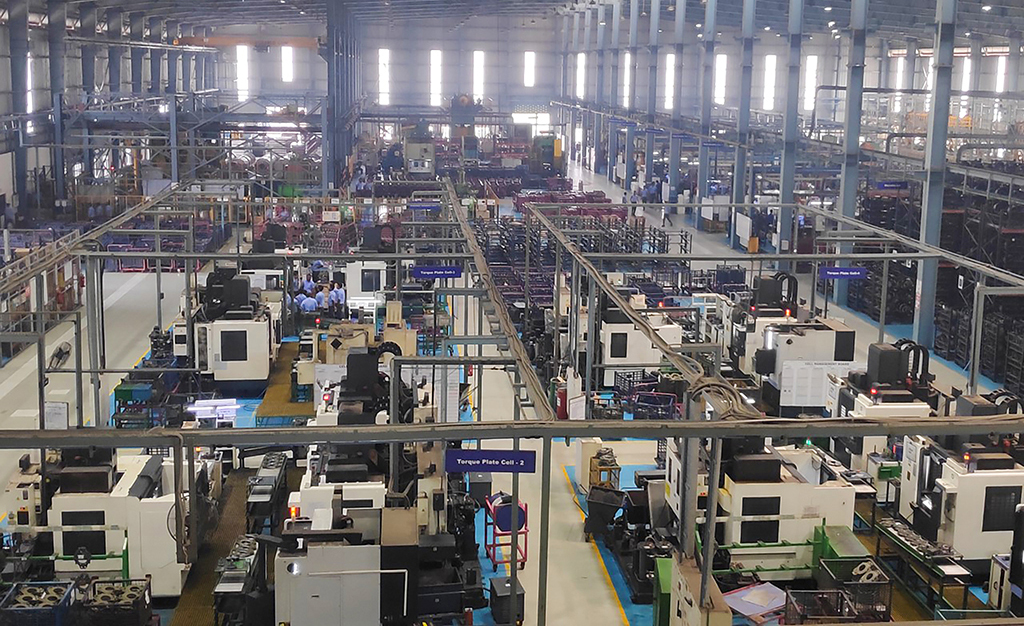
Strong Technology Focus
The Indian market has gradually moved away from being cost-conscious and intensified its focus on technology and research and development to the level that many are developing products in India for the global market. Elaborating on Brakes India’s technological capabilities and research and development initiatives, Sriram says, “In the passenger car segment, which is the most technology-dependent, we have completely localised our core product portfolio of foundation braking and booster master cylinders and are well on top of that. Where our roadmap has to develop, is in the space of EVs and we have been focusing our efforts on this space for the last two years. As we go to non-IC engines, there’s a lot of work going on in electric boosters and associated systems. We are well on the way to develop an electric booster. Over the course of next year we will have announcements on that front as well.”
“The other aspect is electrically actuated brakes. People are becoming more feature-oriented than cost-oriented and these are products that add features as well as safety in a vehicle. Our team is on the path to developing them. As regards CVs, we are talking about a completely new product portfolio – going from traditional foundation braking to air controlled systems. In just about three years we have gone from scratch to having validated products ready for market launch. Our air braking systems are currently running on multiple trucks, validated for over 1 million km. We will have OE contracts in the next six months. This is the fastest that we have gone from concept to OEM acceptance. No doubt it is very encouraging and gives us the self-confidence to develop a product not just for India but for the global markets too”, Sriram reveals.
“On the foundry side, we are probably one of the leading players in India with respect to safety-critical parts. We export close to 60% of our castings and one in four cars in Europe runs with a Brakes India casting for its safety-critical brakes. There is a lot more that we can do with metallurgy and are working on those lines with global partners. We already have a plant in Oman and will have to look at other locations from where we can support our global customers”, he adds.
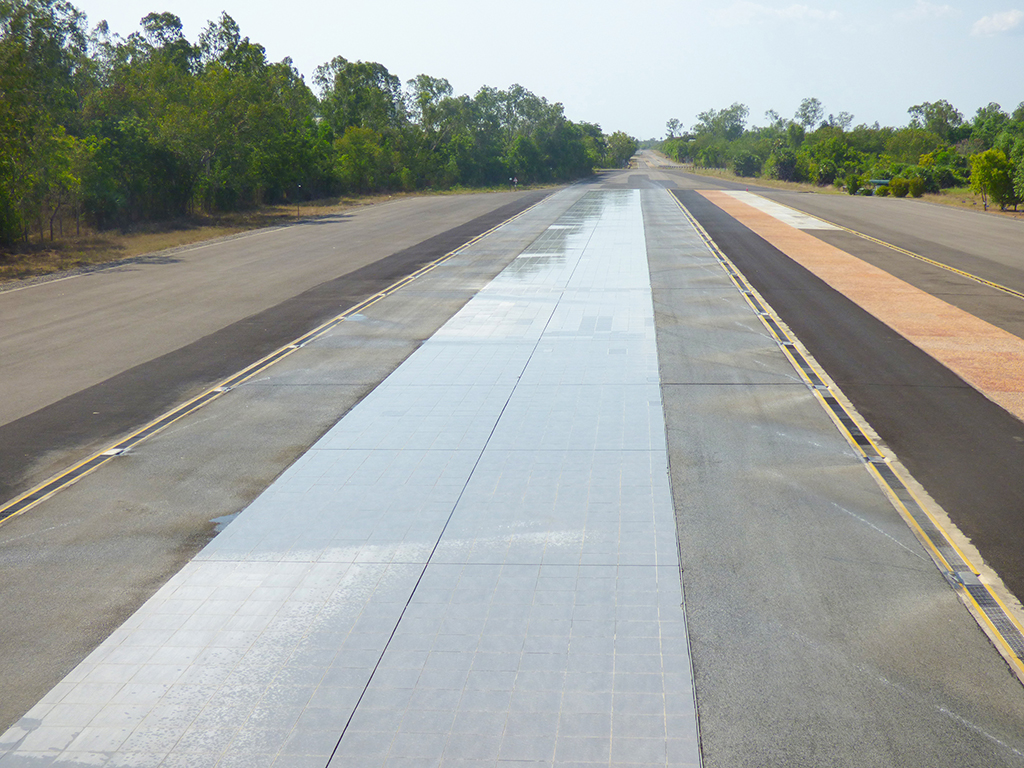
Competitive Edge
Highlighting a key reason which gives the company its competitive edge and why customers should want to associate with it, Sriram states, “India is recognised as a ‘low cost’ country for manufacturing. The problem comes when global OEMs, who are sourcing here, struggle a bit to find the right partner who can meet their standards on quality, product development, value systems and sustainability. From our perspective, because of the value system of our group as well as the experience of working with global partners over many decades, we are truly able to deliver the Indian cost structure with global delivery capability. We have demonstrated this across our foundry, CV and light vehicle businesses.”
“The second aspect that we strive to constantly improve upon is our level of customer service. We are a lot more agile and our product development lead times are among the fastest. As we head into the future, OEM structures will continue to change. We see a lot of smaller EV start-ups coming up and for a very large global MNC to serve them will be challenging because small volume orders demand a lot of attention and the latter would not be interested. So, we think there are many niche areas that we can tap into and also serve the larger OEM contracts that we are pursuing. Further, given the fact that our customers have been extremely supportive, makes us optimistic on multiple fronts.”
The Aftermarket Scenario
Giving an update on Brakes India’s aftermarket business, Sriram says, “Aftermarket is very close to our heart. As a maker of safety-critical products we have always stood for higher quality products in the aftermarket. We know there are some small-time manufacturers and sometimes there are spurious parts in the market – these are areas where competition has been quite challenging in the past. But things have changed in India. Firstly, GST has levelled the playing field substantially for national players by giving them access across the country. The second thing is the ability to leverage a brand nationally has increased. We have seen tremendous increase in demand for our products, especially in markets which were considered low-cost spurious markets. I think the ‘price-value’ equation is changing. The market for non-validated products is coming down.”
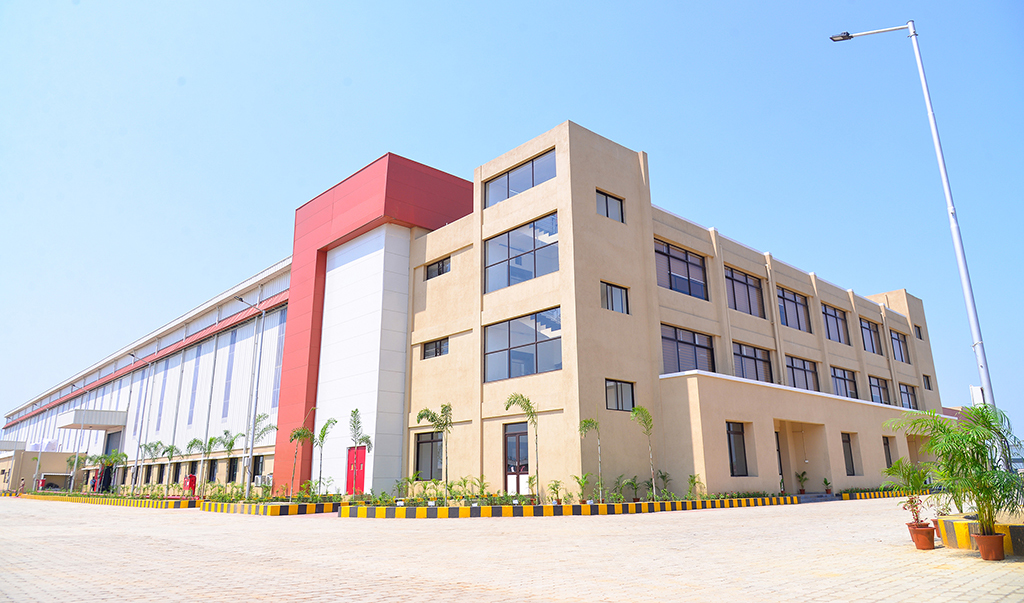
“There is also the aspect of government regulations on safety which is playing its part. People feel that it is worthwhile to invest in a good, safe product than a cheap one, especially if it is safety critical. For us, it is the availability factor that plays a key part. It is important for a mechanic to immediately get the required product. So, give emphasis to availability, quality, and reputation. We have been sending our managers to new locations and have been talking to mechanics across the country about the value of the products. These may appear to be small steps, but the aftermarket offers quite a big opportunity. We have traditionally done well in this market over the last 25-30 years, and it will continue to be a strong point for us”, Sriram elaborates.
Bullish on Exports
Exports will play an important role in the overall strategy of Brakes India. Says Sriram: “We are very bullish on exports. India has been a region with relative stability over the last year and a half and we are a large enough economy to cater to some parts of the globe. Our international relations are good, and this created a lot of optimism about getting a bigger share of the global business. We are working on becoming a major player over the next five years both on the domestic and international fronts. We have over ten original equipment customers across the globe and either we serve them directly or through partners. Europe, I feel, will be a big region for us. We do exports worth almost Rs. 800 crores to Europe. We also have strong links with Japanese customers and are looking at further strengthen our presence in this regions.”
Growth Drivers
Sharing details about the growth drivers that he foresees for the industry as well as for Brakes India, Sriram states, “The first aspect is government support that includes our transition to GST, focus on self-reliance, Make in India, the PLI scheme, etc. The government has done a great job of positioning us as a country that can become a much bigger player at the global level. I think we have a strong base to work on. The second aspect is that there are a lot of global supply chain instabilities. I think we are seeing a big push for ‘China plus one’ around the world and this will support India going forward. The last one is that it is up to Indian players to make the most of the situation. With the economy growing and many players scaling up nationally, we now have the scale to perform globally. As for Brakes India, being able to leverage a strong Indian supply base, a talented Indian workforce, and the ability to serve global demands will push us forward.”
Six Decades and Counting
Brakes India, established in 1962, is celebrating an eventful six-decade journey this year. Giving an overview of the company’s future growth roadmap, Sriram says, “It’s been 60 years of building a successful company. We recently discussed a plan for the next five years. The opportunities ahead are so much more in the next 5-10 years than they have ever been. Our team is most optimistic and excited to be in this position today and is focusing on a few critical areas, technology self-reliance being one of them. We have already started doing it over the last few years but to really own it and say we have everything that our customer needs will be a big achievement. And we have quite a distance to go.”
“I cannot pretend that today we can compete with every MNC on technology, but we can compete on slightly different levers combined with technology, which would be our flexibility or agility. We have invested over the past 20-30 years to work with top global customers. So, from a process, quality, and capability perspective, we can work with the best of them. That is the second level of confidence for us – if we can work with their teams in India, we can work with their teams anywhere. There is some cultural bridging to be done by us, but our efforts are already bearing fruit”, he adds.
“We have kick-started some initiatives in the last two years that will fetch us more business. And the third one is digitisation which we think is going to be a big area for us to scale up. We already have 15 locations across India, and I expect this will grow over time to international locations. So, to cover the needs from design to shop floor, including supply chain, in a seamless digital way will be a grand feat. Also, we are a people-oriented company and therefore the motivation of our team is very critical for us. Right now, I could not be happier with the kind of energy and motivation they are showing”, Sriram concludes.